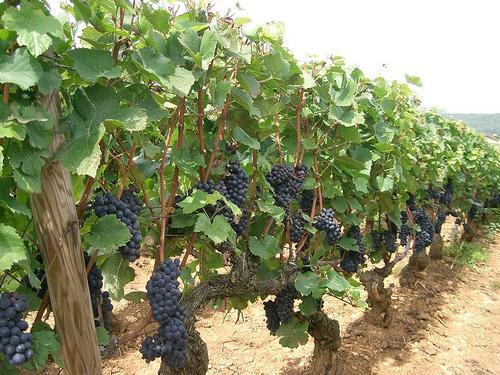BURGUNDY
Society

Society

Popular destinations FRANCE
| Alsace | Ardeche | Auvergne |
| Brittany | Burgundy | Cevennes |
| Corsica | Cote d'azur | Dordogne |
| Jura | Languedoc-roussillon | Loire valley |
| Lot | Normandy | Picardy |
| Provence |
Society
National Governance
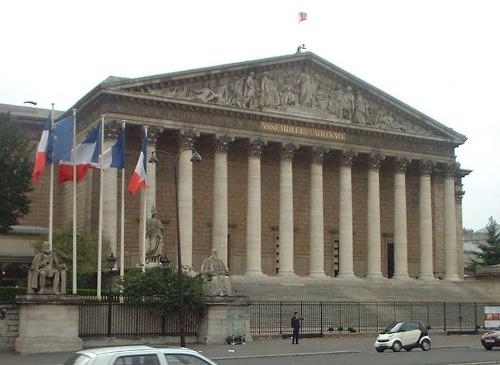 France National AssemblyPhoto: Pol CC 3.0 Unported no changes made
France National AssemblyPhoto: Pol CC 3.0 Unported no changes made
Under the 1958 constitution, France is a parliamentary republic whose president as head of state has extensive powers. The president has been directly elected by the people by universal suffrage for seven years since 1962. In 2002, the President of France will be elected for a term of five years instead of the current seven years.
The president enacts the laws passed by parliament or by the people (in the case of a referendum), signs the decisions of the council of ministers he chairs, appoints the prime minister and, in case of need, can exercise the whole of the legislative and executive powers. withdraw and declare the dissolution of the National Assembly.
If desired, the president can even replace the prime minister, except when there is a so-called "cohabitation" in the government. This only occurs when the composition of the National Assembly is such that the president is forced to appoint a prime minister of a different political color from his own. After the elections of June 1, 1997, this situation arose when the neo-Gullist president Chirac ruled the country together with a cabinet and a Prime Minister Jospin, who were of leftist nature. The collaboration between Chirac and Jospin went quite smoothly for the first four years.
The government, headed by the prime minister, is proposed and appointed by the president. The government determines and implements the general policy of the country and is accountable to the National Assembly.
Legislative power is exercised by the two-chamber parliament. The National Assembly (Assemblée Nationale) has 577 members, 22 of whom are from the overseas departments and territories. The Assembly is elected for five years through a district system. The senate is mainly elected by the members of the "conseils généraux", the departmental councils, and by the municipal councils.
The senate has much less powers than the Assembly and has 321 members, 12 of whom are representatives of the French abroad and 13 for the overseas departments and territories. Senate members are elected for nine years and every three years the senate is renewed for a third. The president of the senate is the second highest office holder in the country after the president.
All French citizens of 18 years and older have the right to vote and to be elected to the Assembly one must be at least 23 years old and 35 years old for the Senate. Women have only had the right to vote since 1944.
Parliamentary and presidential elections take place in two rounds. If the candidate manages to obtain more than 50% of the vote in his constituency in the first round of the parliamentary elections, he is immediately elected. If he does not succeed, a second round follows in which a simple majority is sufficient. A condition for the parliamentary elections is that the candidate has obtained at least 12.5% of the votes in the first round.
In the presidential election, only two candidates who received the most votes in the first round can run in the second round. For the current political situation in France, see chapter history.
Administrative division
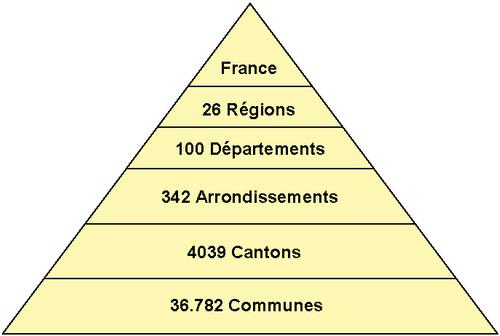
The French state has 22 regions, which are divided into 96 departments. The country also has: four overseas departments, the "Départements d'Outre-Mer" (DOM): French Guyana, Guadeloupe, Martinique and Réunion; three overseas territories, the "Territoires d'Outre-Mer" (TOM): French Polynesia, the Wallis and Futuna Islands and New Caledonia; the two overseas 'collectivités territoriales' Mayotte and St-Pierre-en-Miquelon and some areas on the South Pole, "Les Terres Australes et Antarctiques Françaises (TAAF). The prefet is in charge of each region and department and is the representative of the government and of each individual minister.
The departments are divided into arrondissements (325), headed by a sous prefet; the arrondissements are divided into cantons (3,714) and these in turn into 36,433 municipalities. Approx. 90% of the municipalities have less than 2000 inhabitants. The arrondissements and cantons have only administrative significance.
The Union of the Corsican People (Union du Peuple Corse) has been fighting for the island's independence for years and has many hundreds of bombings to its name. The region of Corsica has a separate status since 1981, a degree of self-government. The bombings then temporarily diminished, but in 1982 more than 800 attacks were committed.
Regional governance and administrative division
The Burgundy region, with Dijon as its capital, is administratively divided into four departments or prefectures: Côte d'Or, Saône-et-Loire, Nièvre and Yonne.
The departments are subdivided into 15 districts (arrondissements), 174 cantons and 2044 municipalities.
In 1982 the organization, tasks and powers of the regions were established. Since 1986 there have been direct elections to the regional parliaments, the "Conseil Régionals". A regional government is mainly concerned with promoting the economic, social and cultural development of the region. It is supported in this by an advisory committee comprising various social and economic organizations. Although they are allowed to levy their own taxes, their budget is significantly lower than that of the departments.
Typically Burgundy
Burgundy Pinot NoirPhoto: PRA CC 3.0 Unported no changes made
WINE
General
Wine was already being produced on the Burgundian territory at the beginning of our era. In the Middle Ages it was mainly the monks who were engaged in viticulture. Four abbeys were very important: Cluny, Cîteaux, Bèze and Saint-Vivant. In the 18th century the professional wine trade began to develop and the first commercial wholesalers settled in Beaune and then in Nuits-St-George and Dijon. A tragedy for winegrowing was the American phylloxera phylloxera, which destroyed all Burgundian vineyards in the second half of the 19th century. They were able to recover thanks to the grafting of French vines on American rootstocks that were resistant to the phylloxera.
The quality of a wine is mainly determined by the grape variety (cépage), the quality of the soil (terroir) and the climate. The Burgundian vineyards are terraced on slopes of which the height varies between 200 and 500 meters. The orientation of the slopes is very important and differs for each area. In each wine village, the vineyards are divided into "climats", which are composed according to the soil and the location of the terrain.
For a good Burgundy wine, it is essential to pay close attention to the year in which the wine was bottled, as weather conditions strongly influence the quality of the wines.
Burgundies ripen well and reach their peak after a few years. In general, they are preferably left for five to seven years. Large white wines, on the other hand, are eight to ten years old and large red wines ten to fifteen years.
Depending on the grape and the climate, picking takes place in September or October. This is often still done by hand, but also increasingly with advanced picking machines.
Grapes
Pinot noir: these grapes are used to make the important red wines of the Côte. The production is mainly focused on storage wines that have to mature for ten to twenty years.
Chardonnay: very suitable for the important white wines of Burgundy. This grape variety thrives best on calcareous, marl-rich soils.
Gamay: is used for the red wines from the granite soils of the Beaujolais, but also on the clay-limestone soils of the Mâconnais and Chalonnais
Aligoté: indigenous white grape only used to produce the fresh, fruity "burgundy aligoté".
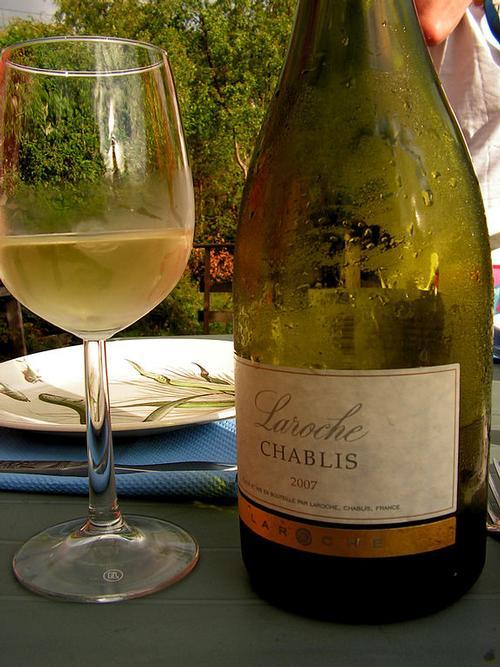
Famous Regions
The Chablisien and Auxerrois: the vineyards of the world famous chablis (made from the Chardonnay grape, here called Beaunois) are located in the north of Burgundy. The chablis comes from the slopes with a good location, the "chablis premier cru" and the "chablis grand cru" come from the best plots. There are four so-called apellations: petit chablis, chablis, chablis premier cru and the seven grands cru, Blanchot, Bougueros, Les Clos, Grenouille, Preuses, Valmur and Vaudésir.
The Auxerrois vineyards have traditionally supplied the capital with red wines along the rivers Yonne and Seine. Well-known wine towns are Irancy and Saint-Bris, where an excellent white wine is also made from the Sauvignon Blanc grape variety.
The Côte d'Or or La Côte: a 50 km long ridge with a width of 400-1800 meters that lies between the Canal de Bourgogne at Dijon and the Canal du Center at Chagny. The vineyards of the Côte de Nuits (1,300 ha) begin south of the city of Dijon and continue to the village of Nuits-Saint-Georges, 20 kilometers to the south.
Romanée-Conti: this 1.8 ha vineyard is the most famous in the world and belonged to Madame de Pompadour in the past.
Clos de Vougeot: the most famous "clos" has been around since the 13th century. The vineyard, with its dark, full-bodied wines, was founded by monks from the Abbey of Cîteaux.
Côte de Beaune: this area stretches from Ladoix-Serrigny to Maranges. White wines that are among the best in the world come from here: Charlemagne, Meursault and Puligny-Montrachet.
Hautes-Côtes de Nuits and Hautes-Côtes de Beaune: The vineyards of these two areas are somewhat higher and the temperatures are therefore somewhat lower. Most wines that are produced are therefore somewhat lighter in taste.
Côte Chalonnaise: The wines from this area are not yet well known: Rully, Bouzeron and Givry among others.
Maconnais: this region runs from Tournus to Macon and the most commonly used grape is chardonnay. Well-known wines are Pouilly-Fuissé, Pouilly-Vinzelles and Saint-Véran. With 6,500 ha, the Maconnais is the largest wine region in Burgundy.
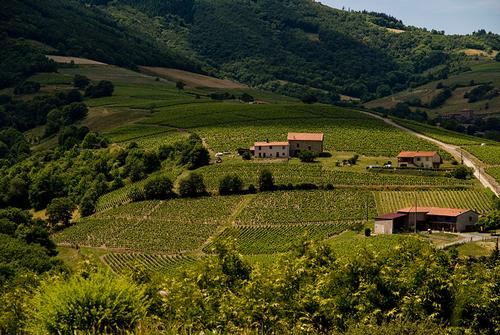 Beaujolais BurgundyPhoto: Geoff Wong CC 2.0 Generic no changes made
Beaujolais BurgundyPhoto: Geoff Wong CC 2.0 Generic no changes made
Beaujolais wines
Since 1930, Beaujolais has been recognized as the most southern wine region of Burgundy and owes its name to the house Beaujeu.
Viticulture in this area dates back to the time of the Romans. Beaujolais wines were very popular in the Middle Ages, but fell out of favor in the 17th century. They were rediscovered in the 18th century and new sales markets could be reached through the development of the railway network. The vineyards stretch from the slopes of the Mâconin in the north to the Azergues Valley in the south.
The gamay grape produces a fresh, fruity wine, which is drunk young and, unlike most other red wines, is chilled.
Sources
Bourgondië
Lannoo
Bourgondië, Jura
Michelin Reisuitgaven
Bussmann, K. / Bourgondië : kastelen, kloosters, en kathedralen in het hart van Frankrijk
Cantecleer
Evers, K. / Bourgondië
Gottmer
Frankrijk : natuurreisgids
Cantecleer
Keuning, T. / Bourgondië, Champagne
ANWB
CIA - World Factbook
BBC - Country Profiles
Last updated June 2025Copyright: Team The World of Info
